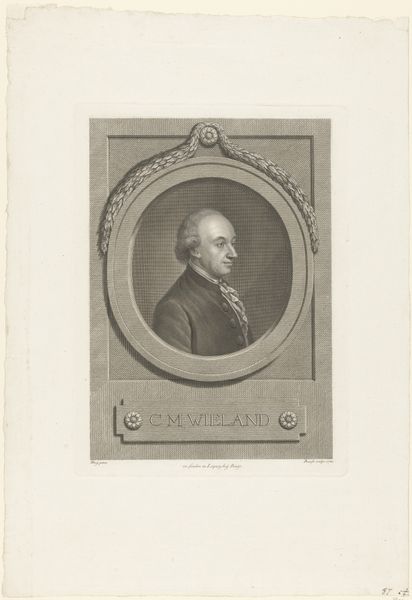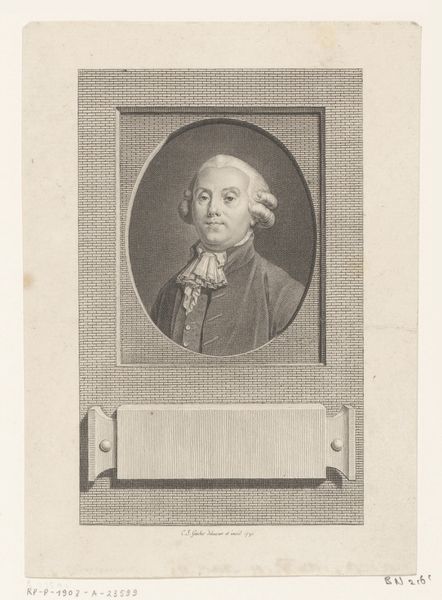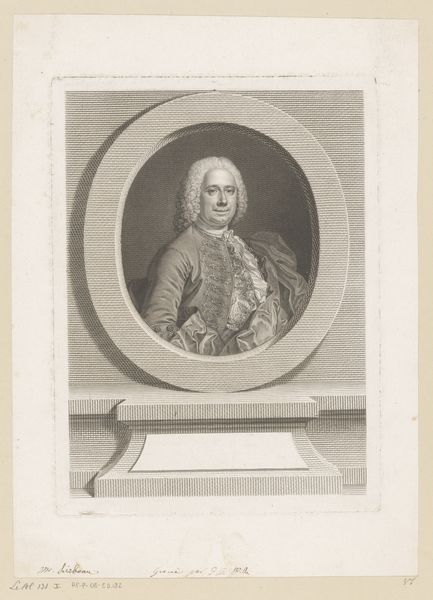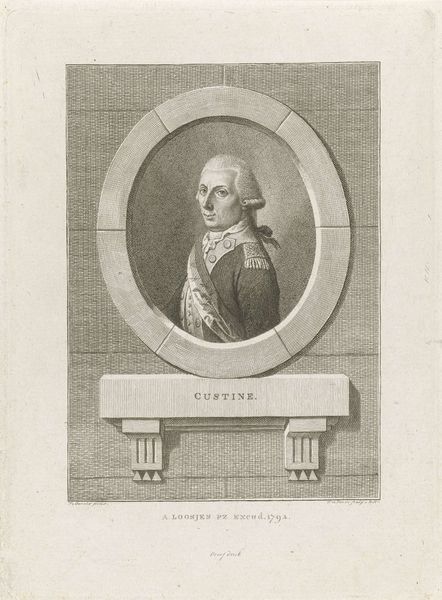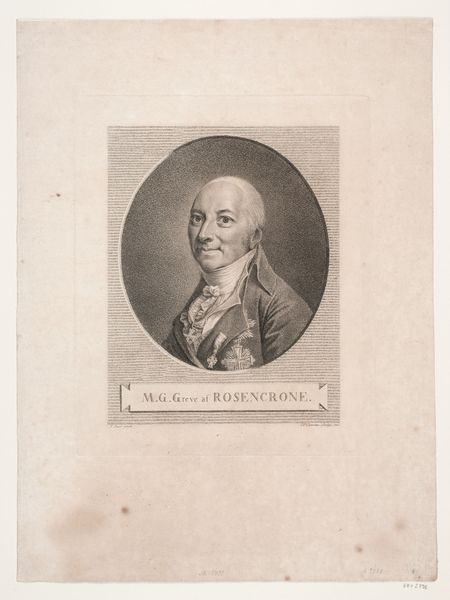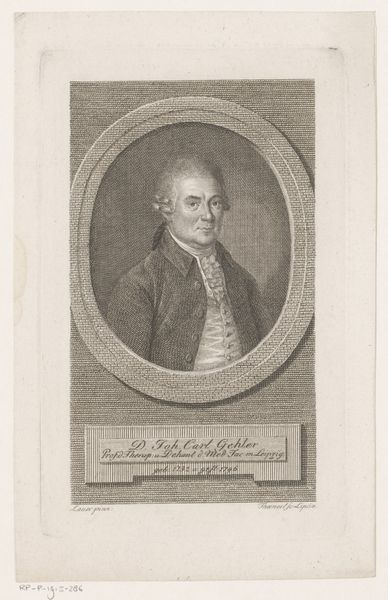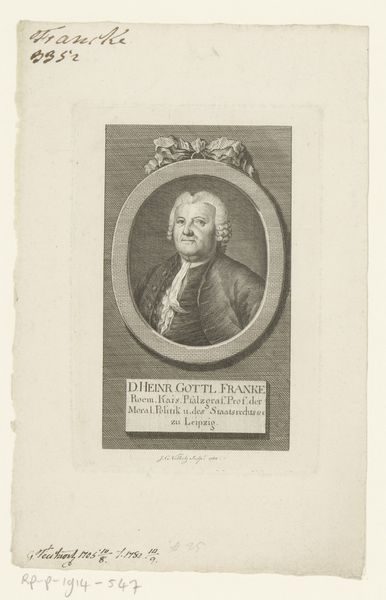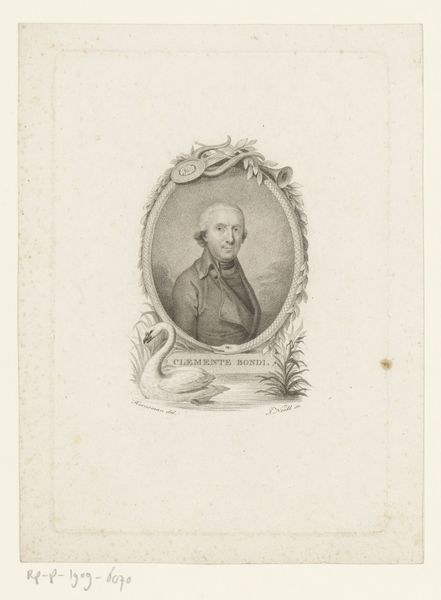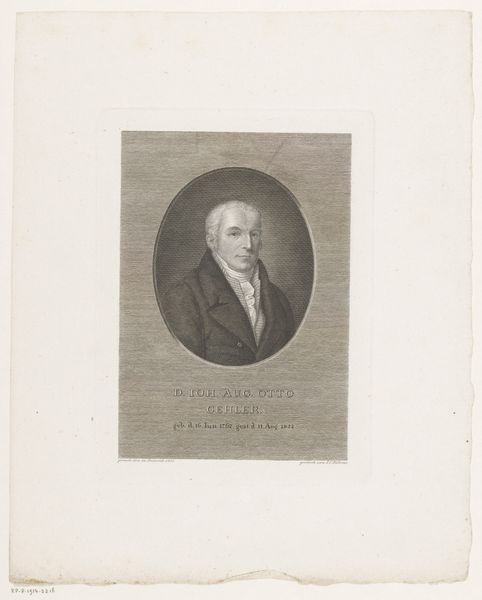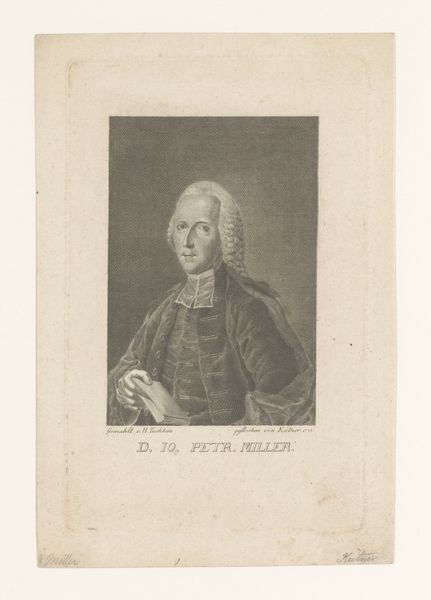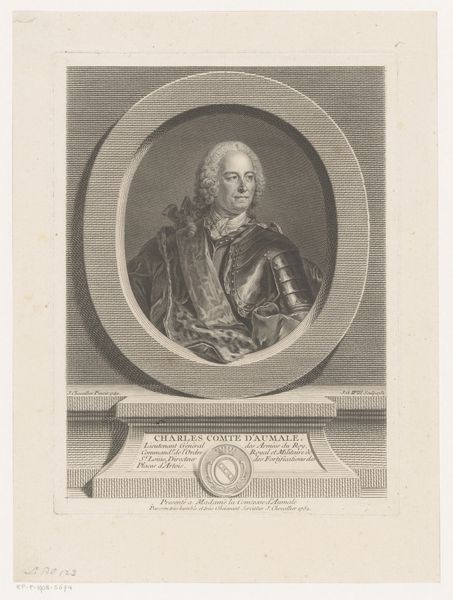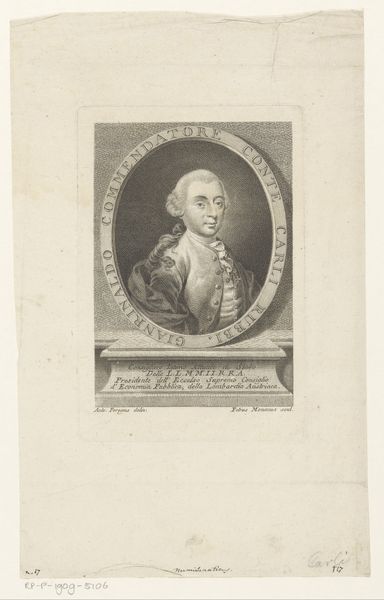
#
photo of handprinted image
#
aged paper
#
toned paper
#
wedding photograph
#
photo restoration
#
colourisation
#
old engraving style
#
historical photography
#
old-timey
#
19th century
Dimensions: height 273 mm, width 196 mm
Copyright: Rijks Museum: Open Domain
This is Johann Friedrich Bause's portrait of Christian Furchtegott Gellert, made using engraving, a printmaking technique that was widespread at the time. The process involves using a tool called a burin to carve lines into a metal plate, which is then inked and printed. The fine lines created by the burin allow for detailed rendering of Gellert's features and clothing, characteristic of the time. But let's think about what this mode of production meant. Engraving allowed for the mass production of images, spreading Gellert's likeness far and wide. This connects to the rise of a print culture that was part and parcel of Enlightenment society. Prints could be made relatively quickly, and at scale, and sold at a reasonable price. They were thus powerful tools for spreading information and ideas, and for establishing the reputations of public figures. So, next time you look at a print, remember that you're not just seeing an image, but also a product of complex social forces. By focusing on the materiality of things and how they are made, we get a richer understanding of their historical context.
Comments
No comments
Be the first to comment and join the conversation on the ultimate creative platform.
